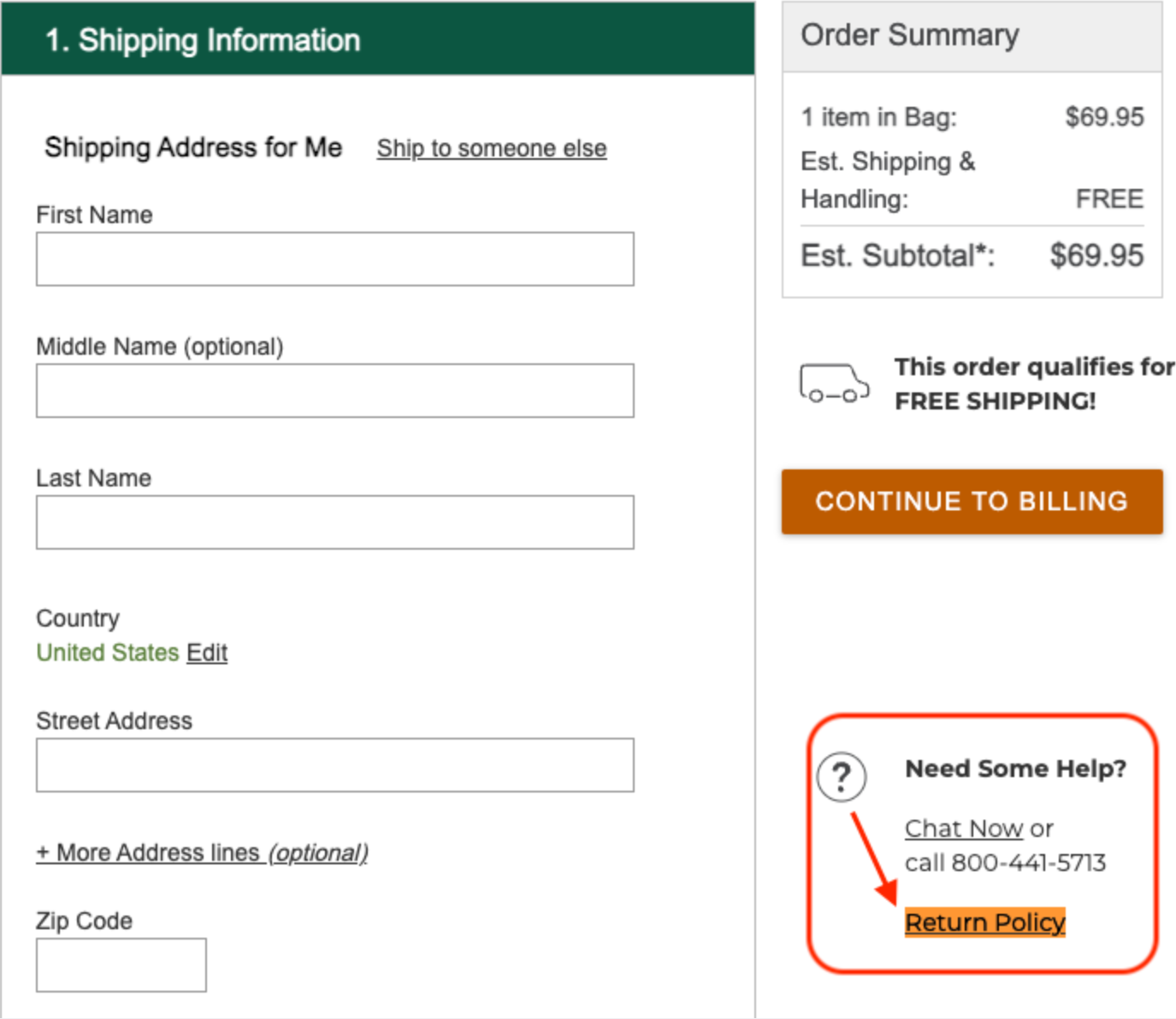This article is about optimizing the checkout page of e-commerce websites by providing clear and transparent shipping information to customers. In the previous article, the importance of offering a guest checkout option was discussed. This article will explore best practices for displaying shipping options and fees, including presenting shipping costs clearly, offering flexible shipping options, and estimating shipping times accurately.
Shipping options and fees
Introduction: When it comes to online shopping, customers expect a seamless and hassle-free checkout process, and one of the critical aspects of this experience is the availability of various shipping options and their associated fees.
Elements:
a. Clear and concise shipping options
b. Transparent fees
c. Customization and flexibility
Solutions and suggestions:
Is the shipping information displayed clearly and prominently, including the estimated delivery time and any tracking information?
One of the crucial elements of an effective checkout page in e-commerce websites is the clear and prominent display of shipping information. This includes providing the estimated delivery time and any tracking information in a visible location, preferably at the top of the page. It’s essential to provide transparency and reassurance to customers, letting them know exactly when to expect their orders and how to track them.
A good example from Zelando:
Zelando website displays the estimated delivery time (two days) on its checkout page.

A bad example from Urban Outfitter’s website:
Urban Outfitters doesn’t display shipping information clearly and prominently, making it difficult for customers to find the estimated delivery time and tracking information.

Do you offer multiple shipping options, such as standard, expedited, or overnight, to cater to different customer needs and preferences?
Offering multiple shipping options on the checkout page of an e-commerce website is a best practice in conversion rate optimization (CRO). This approach caters to different customer needs and preferences, enabling customers to choose the shipping option that best suits their requirements. Providing standard, expedited, or overnight shipping options on the checkout page can help reduce cart abandonment rates and increase conversions. Offering a range of shipping options also gives customers the flexibility to choose their preferred shipping speed, which can enhance their overall shopping experience. Therefore, to optimize the checkout page CRO of an e-commerce website, it is recommended to provide multiple shipping options.
A good example from Nordstrom Website:
Nordstrom offers a variety of shipping options on their checkout page, including postal shipping, standard shipping, express shipping. They also show clear shipping fee. This approach provides customers with a high level of convenience and flexibility, which can help to increase sales and customer retention.

Are the shipping fees calculated accurately and transparently, with no hidden charges or surprises at checkout?
The accuracy and transparency of shipping fees on an e-commerce website’s checkout page is critical to providing a positive user experience and increasing conversions. Best practices for ensuring accurate shipping fees include integrating with reputable shipping carriers to accurately calculate rates based on the customer’s location, order weight, and selected shipping method. Additionally, it’s important to clearly communicate any potential additional fees, such as taxes or handling charges, upfront and transparently to avoid any unpleasant surprises at checkout. One effective solution for achieving this is to display estimated shipping costs on the product pages or in the shopping cart, allowing customers to make informed purchasing decisions and reducing the likelihood of cart abandonment due to unexpected costs at checkout.
Good example from Crocs:
Crocs e-commerce website is known for their exceptional customer service, and part of this includes transparent and accurate shipping fees. During the checkout process, customers are provided with a clear breakdown of the shipping costs and taxes.

A bad example fro Columbia website:
Columbia’s shipping fees are not clearly displayed on their website, making it difficult for customers to understand the true cost of their purchase before completing the checkout process. These issues could lead to frustration and mistrust among customers, potentially leading to lost sales and damage to the brand’s reputation.

Do you provide information about the returns policy, shipping information, and privacy policy before completing their purchase?
This information is essential for customers to make informed decisions about their purchases and ensures a transparent shopping experience. By providing clear and concise information about these policies, customers feel more confident and secure about their purchases, which can help increase conversion rates and reduce cart abandonment rates. A solution to ensure that this information is readily available is to include it in the checkout page or a dedicated page linked from the checkout page. This allows customers to access the information easily without having to navigate through the website.
A good example from L.L. Bean Website:
L.L. Bean is an e-commerce website that has a dedicated online chat section on their checkout page that outlines their returns policy.

A bad example from Mous Website:
Mous website doesn’t provide any information about their return policy on their checkout page. Customers have to navigate to their help center or the footer of the website to find information about returns, which can be a frustrating experience.

Conclusion:
This is a thank you message for following the series on optimizing the checkout page of e-commerce websites, with emphasis on the importance of displaying shipping options and fees clearly. The series covered essential topics such as data entry, payment options, mobile responsiveness, loading time, and clear design, all of which are critical in creating a seamless and enjoyable checkout experience for customers. It is recommended to continuously refine the checkout page to meet customers’ evolving needs and expectations, build trust, and increase conversion rates. Thank you for reading, and good luck with your e-commerce business.
